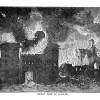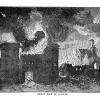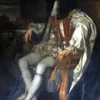Important update from TheSchoolRun
For the past 13 years, TheSchoolRun has been run by a small team of mums working from home, dedicated to providing quality educational resources to primary school parents. Unfortunately, rising supplier costs and falling revenue have made it impossible for us to continue operating, and we’ve had to make the difficult decision to close. The good news: We’ve arranged for another educational provider to take over many of our resources. These will be hosted on a new portal, where the content will be updated and expanded to support your child’s learning.
What this means for subscribers:
- Your subscription is still active, and for now, you can keep using the website as normal — just log in with your usual details to access all our articles and resources*.
- In a few months, all resources will move to the new portal. You’ll continue to have access there until your subscription ends. We’ll send you full details nearer the time.
- As a thank you for your support, we’ll also be sending you 16 primary school eBooks (worth £108.84) to download and keep.
A few changes to be aware of:
- The Learning Journey weekly email has ended, but your child’s plan will still be updated on your dashboard each Monday. Just log in to see the recommended worksheets.
- The 11+ weekly emails have now ended. We sent you all the remaining emails in the series at the end of March — please check your inbox (and spam folder) if you haven’t seen them. You can also follow the full programme here: 11+ Learning Journey.
If you have any questions, please contact us at enquiries@theschoolrun.com. Thank you for being part of our journey it’s been a privilege to support your family’s learning.
*If you need to reset your password, it will still work as usual. Please check your spam folder if the reset email doesn’t appear in your inbox.
The Great Plague

During the hot summer of 1665, London was hit by a terrible disease known as The Great Plague. The disease had spread rapidly across parts of Europe and caused many deaths.
Although there had been a plague epidemic (known as the Black Death) 300 years earlier, killing lots of people, there was still no cure.
Medicine was not like it is today and towns and cities were often filthy places to live. By the end of 1665, about 100,000 people had died from the plague in London.
Top 10 facts
- The Great Plague occurred between 1665 and 1666.
- People were terrified of the plague – just 300 years earlier it had killed millions.
- It’s no wonder people were so scared – the plague killed people at an alarming rate and victims died within days of catching the illness.
- The plague certainly wasn’t a pleasant disease! The most common symptoms included headaches, fever, vomiting, painful swellings on the neck, armpits and groin (known as buboes), blisters and bruises and coughing up blood.
- There was still no cure for the plague – people just had to try and stop it from spreading. People suffering or showing symptoms of the plague were simply banished to their homes. Even healthy family members could not leave the house. A large red cross was nailed to the front door to warn others that those inside were infected. 'God have mercy upon us' was written on the door.
- The plague spread rapidly and was responsible for destroying the population of a town or even a city within weeks. Cloth traders and people trying to escape the plague unfortunately carried the disease with them.
- Some doctors believed that bad poisonous air was the cause of the plague, infecting anyone who breathed it.
- The cause of the plague was also blamed on livestock carrying the disease while others believed it to be a punishment from God.
- The real root of the problem was RATS! What people did not understand was that the plague was a disease found in black rats. Fleas would bite the rats and become infected and the infected fleas would then spread the disease to humans.
- Rats were of course the culprits and they thrived in the towns and cities, especially London. Unfortunately the rat population had tripled in just a few years.
Timeline
- 1348The plague, which became known as the Black Death, first struck London.
- 1350The Black Death had killed millions of people.

- 1518The first regulations to stop the plague were introduced in London.
- February 1665The outbreak of the plague began in London.
- May 1665By May 43 people had died from the plague.
- July 1665The plague was rampant. King Charles II of England, his family and his court left the city for Salisbury.

- July 166517,036 people die from the plague by July.
- August 1665The plague reaches the Derbyshire village of Eyam.
- September 1665The King moves to Oxford as Salisbury is hit by the plague.
- December 1665By now people who had fled the plague began to move back to London.
- February 1666London was considered safe enough for King Charles II to return to the capital.
- September 1666The Great Fire of London occurred.



Boost Your Child's Learning Today!
- Get a tailored learning plan for your child
- Spend 10 minutes a week completing activities
- See your child jump ahead in their knowledge and confidence
Did you know?
- Every week in London during the 1600s the Bills of Mortality were announced – basically a record of who had died and what had killed them.
- In April 1665, the first officially recorded death from the plague occurred.
- The Great Plague killed an estimated 100,000 people, almost a quarter of London's population.
- People were so terrified of the plague, they were willing to try any kind of cure, however strange it seemed! The remedies ranged from the fairly normal, like drinking fine wines, to the more absurd, like eating toads or bathing in milk. Some people even smoked tobacco to stop any bad air entering their lungs!
- There appeared to be two strains of the plague – bubonic plague which was spread by rats and infected fleas and pneumonic plague which was carried in the air and spread by sneezing. The shocking thing was that anyone who caught it often died within a day.
- The bubonic plague was so-called because of the disgusting pus-filled boils or ‘buboes’ that appeared on the body.
- Probably one of the most unpleasant jobs of that time was the ‘Plague Body Carrier’ – someone employed to get rid of the dead bodies in plague pits, which were basically mass graves.
- Children today still sing the popular rhyme ‘Ring-a-ring o’ roses’. But what you might not know is that this rhyme is thought by some to be about the Great Plague. The words "ring-a-ring o’ roses" is thought to describe the red spots that appeared on the skin, "a pocket full of posies" is believed to refer to the small bunches of flowers people carried to keep the disease away, "atish-oo atish-oo" is the sound of sneezing and "we all fall down" at the end of the rhyme is meant to mark the death of the victim!
- The Great Fire of London which took place in 1666 destroyed a lot of the old, rat-infested buildings, but a very cold winter had already stopped the spread of the disease as the rats and fleas were affected by the bad weather.
Can you spot the following in the gallery below?
- King Charles II
- A rat
- A flea
- The Great Fire of London
- Samuel Pepys
Gallery
About
London in the 1600s was a very different place to the city you see today. It was dirty, smelly and overrun with people. Health and hygiene was poor – London was not a very healthy place to live! The summer of 1665 was unfortunately a very hot one – rats and fleas multiplied and as a result the plague spread rapidly.
The Great Plague fast became an epidemic – the infectious disease spread at a rapid rate in a very short period of time, affecting a large number of people.
People feared the plague – probably because there was still no cure and it killed people at an alarming rate with victims dying within days of catching the illness. Even if only one member of your family caught the disease, your whole family would be quarantined and a red cross would be painted on your door to warn others to stay away.
There were many theories about the cause of the plague. The Mayor of London thought that domestic animals were to blame and ordered that all cats and dogs should be destroyed. But this of course just made matters worse as the rats had even more chance to multiply in number without their predators around!
The Mayor also ordered fires in the streets to purify the air, people to pray in public and insisted places like theatres and dancing houses were also closed down to stop the spread of infection.
In the Middle Ages the Black Death killed tens of millions of people in Europe, but it wasn’t until 1518 that the first regulations to try and stop the plague were introduced in London. People were told to hang a bale of straw outside their house for 40 days if they became infected and those living in infected homes had to carry a white stick when they went out to warn others to stay away.
More rules were gradually added over the years, such as painting red crosses on doors, only burying the dead at night and ringing a bell for 45 minutes for each burial. Hearing the ringing bell was meant to remind people to follow the plague prevention rules.
One village that was famously affected by the Great Plague was Eyam in Derbyshire. The story goes that the plague arrived in the village in August 1665 and was brought from London in a bale of cloth or a parcel of patterns infested with fleas. In order to stop the plague from spreading further, none of the villagers left Eyam. The plague was thought to have lasted for more than a year there, wiping out about three quarters of the village.
Thanks to the famous diarist Samuel Pepys, we have a good insight into life at the time of the Great Plague. He wrote about his everyday life for almost 10 years. When the Great Plague struck, people were warned to stay indoors and close their windows. Instead Pepys was very curious and wanted to see for himself what was going on!
Samuel Pepys’ diary is housed in Cambridge’s Magdalen College. This is just one of his diary entries from the 7th June 1665. ‘This day, I did in Drury-lane see two or three houses marked with a red cross upon the doors, and "Lord have mercy upon us" writ there – which was a sad sight to me, being the first of that kind that to my remembrance I ever saw.’
Samuel Pepys also detailed another tragedy to hit the capital – the Great Fire of London, which destroyed many of the rat-infested buildings although the spread of disease had already been slowed considerably by a very harsh winter.
Can you believe that the plague is still around today? There are still around 2,000 incidences of the plague every year but luckily in most cases it can be cured by antibiotics.
Related Videos
Just for fun...
- Try a KS1 Great Plague quiz
- Download a mini KS1 Great Plague activity pack
- Answer BBC Bitesize questions about the Great Plague to see how much you’ve really learnt
Children's books about the Great Plague of 1666
Find out more
- Read more about Plague "cures"
- Find out more about the Great Plague and what helped to put an end to it
- Historical fiction about the Plague: read some kids' fiction about the events of 1666
- Great Plague of London facts for kids from the Kiddle Encyclopedia
- Read the story of weaver John New, who lived in Plague-infested London
- DNA testing has confirmed the identity of the bacteria behind London's Great Plague
- A children's introduction to the Black Death in 14th and 17th century Europe
- In 2012 the KS2 SATs test featured a story about the Great Plague – download the 2012 English Y6 SATs past paper to read it
- The Great Plague in numbers: facts and illustrations in an infographic
- See illustrations of the Great Plague in 1665, and read the accounts written by Samuel Pepys, who was a young civil servant living in London
See for yourself
- Cambridge’s Magdalene College houses Samuel Pepys' famous diary
- Visit the Eyam museum to find out just how the village was affected by the Great Plague
- The War, Plague & Fire gallery at the Museum of London is all about events of the 1600s















